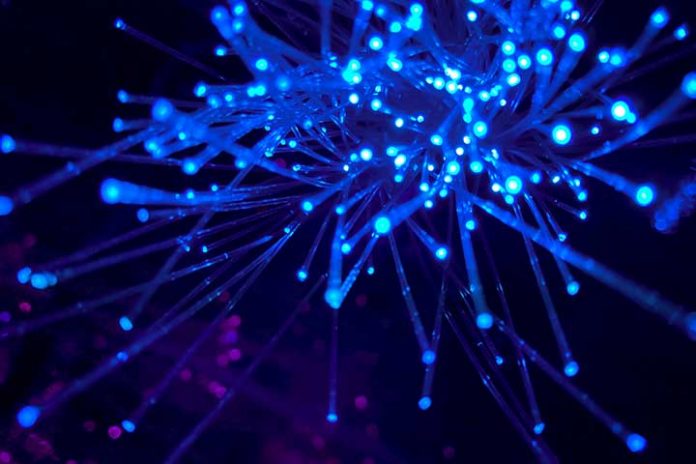Because fiber optics is not only the future, it is already the present. It’s what allows you to watch Netflix in 4K, play at full throttle and download whatever you need in an instant.
And we bet on fiber because, literally, we bet on giving you what you need at the speed of light, because that’s what fiber optics is based on.
You do not believe it? Discover here what exactly fiber optics is and how it works, and all the advantages that make it your ideal way of connecting. Keep reading!
What is fiber optics?
Optical fiber is the transfer medium used for data and telecommunications networks, capable of transmitting a large volume of information over long distances.
If you have ever wondered what is inside the cable that we put on you, the answer is that the most cutting-edge is inside. Imagine a thread made of glass (silica, it’s called) or plastic, which is ten times thinner than your hair .
Now imagine many of those crystal threads, around a core and covered with various reinforcements that protect them. That fiber optic cable that you see coming out of your modem is made of that, a very fine filament of a transparent material, either fiberglass or plastic material , and not copper or aluminum like other conventional cables.
Before, the old ADSL technology allowed data to be sent using the copper cables of the old fixed telephone lines, but those cables had many limitations, so fiber optics allows much faster speeds, thanks to how light is transmitted.
How does fiber optics work?
Fiber optic technology does not transmit electricity, but pulses of light. And how is that, Lowi? We make a comparison, which always looks clearer:
Imagine that you turn on a flashlight to illuminate a friend in the dark. He had better be in a straight line and there are no obstacles, or you won’t be able to get that light to him. How could you do it if your friend is around a corner?
You could have a mirror pointed at him and some of the light you cast on the mirror would be reflected back to your friend.
Fiber optic cables work in a very similar way. A light is emitted that is reflected in the glass of the fiber optic cable, traveling through it until it reaches its destination. This allows you to carry the data of that important mail or bring you the latest episode of your favorite series. And it does so much faster than you could move that data over the old copper wires.
What is fiber optics used for?
Fiber optics is used to have internet, but compared to ADSL, it offers much higher connection speeds . In other words, you can do everything you usually do on the internet, but much faster. The difference is noticeable when it comes to loading web pages, but also in other more demanding tasks such as downloading or uploading files, making video calls without your voice breaking all the time, downloading a season of your favorite Netflix series… of everything, but with more speed!
What are the advantages and disadvantages of fiber?
Advantages of fiber optics
As we have already mentioned, and in fact we have practically told you that fiber optics is synonymous with speed, but even more advantages are derived from this:
- increased speed
- Less interference affecting your connection
- Much more stable signal
- Fiber cables are more environmentally friendly
- lighter wires
Disadvantages of fiber optics
Well, of course, like all good things, it had to have some disadvantage. Which are?
- Not all carriers have coverage. You can see our fiber coverage , it will surely come to your house.
- The price is usually somewhat higher than that of an ADSL connection, but you already know that our fiber offers have low-cost prices and they solve that little problem for you
- The fiber is somewhat more fragile and special care must be taken when installing it.
And now that you know everything about fiber optics, you won’t want to live without it, fly!


